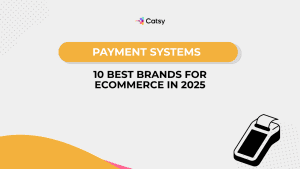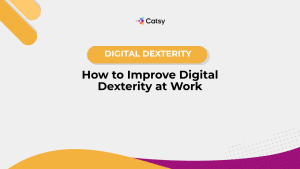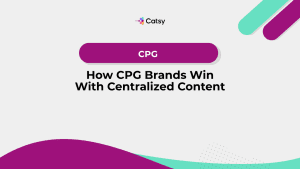The Importance of Digital Asset Management (DAM): Part 2

In this Article
Whether you’re new to product content marketing or have been in the industry since the end of the last century, you’ve undoubtedly felt the frustration of losing digital assets in a web of files and folders. After spending countless hours searching to no avail, eventually you realize it’s time to do a product re-shoot.
Even amongst the growing amount of automation softwares, few have more tools for producing long-term ROI than the Digital Asset Management (DAM) system. An automated DAM can speed products to market, improve SEO, empower sales teams to promote products and much, much more.
In this concluding part of our series on the importance of using Digital Asset Management, we look at more benefits of DAM and some industry-leading features that make you and your organization reach your sales and marketing objectives.

As noted in Part 1 of “Why is Digital Asset Management (DAM) Important?” Digital Asset Management centralizes all digital assets into a central location, or single source of truth. As the illustration above shows, DAM illuminates duplicates and ensures hard-earned assets are never lost again.
After assets have been centralized, organized and optimized, Catsy DAM empowers teams to share assets freely using a brand portal. Your customized has role-based security, meaning only authorized users have access to your digital assets.
Catsy DAM features industry-leading export tools that enable product marketers to save hours upon hours of work by allowing them to make modifications when necessary. For example, you can resize and rename images directly from DAM instead of using third-party apps like Adobe Photoshop.
In this final article of the 2-part blog series, we’ll address how your teams can use digital asset management efficiently to speed products to market, win over customers with relevant product visuals and drive revenue for your organization.

Automated export tools in Digital Asset Management save product marketers hours of time each week.
Many companies rely on digital asset management for their external distribution of assets. For product marketers, having all the assets they need in one source of truth is a game-changer. But they want more than just that. Frequently, product marketers have to share their digital assets with partners, distributors, suppliers, etc.
To make this part of your work easy, Catsy has on-demand automated export tools that allow them to share digital assets with various third parties in whatever format they want.
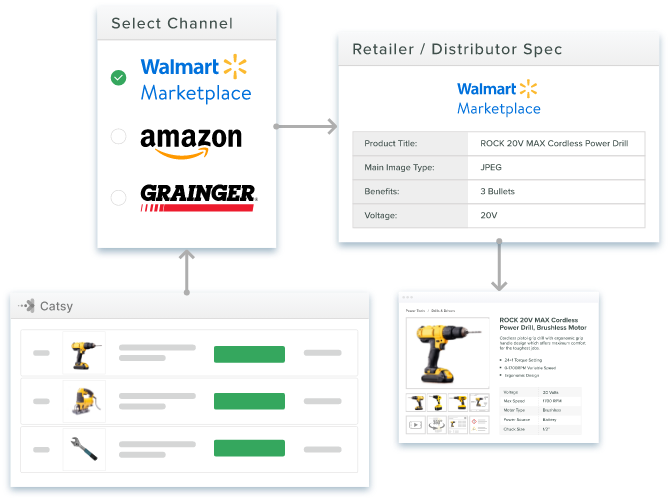
For example, instead of going through the manual process of resizing and renaming on Adobe Photoshop, you can now get it done in a matter of clicks on Catsy. This saves you productive hours and helps you work faster. Let’s take a look at some of the things you can do with these automated export tools.
1. Resize and export directly to retailer and distributor spec.
On average, you have thousands of digital assets. Often, your retailers and distributors may need digital assets in specific formats.
2. Rename assets in bulk.
Imagine you have hundreds of digital assets to export to various channels at a go, and these assets have inconsistent names that you have to change. You can rename all the assets within the Catsy platform, all at once, before you export it.
The changes you make are automatically recorded and are up-to-date on the central system.
3. Export assets in bulk.
Save hours of productive work spent exporting assets individually. In addition, you can export assets in bulk with the Catsy DAM.
4. Export to URLs, files and/or dynamic links.
When you have to share your assets across different channels or with distributors, for example, Catsy DAM has unique export tools that allow you to send the assets in the format you want while converting them to URLs, files, or dynamic links.

Digital Asset Management allows you to share assets with partners and sales teams seamlessly, using a Brand Portal.
Your brand portal is an extension of Digital Asset Management (DAM). It is a secure portal storing PDFs, catalogs, images, videos, 360 photos and more. As product marketers, brand portals make your job easier and more efficient.
With Catsy Brand Portal, gone are the days of sharing assets for specific partners or retailers via shared folders and emails. Combing through to ensure assets are the most up-to-date version before sending, only to realize you missed several outdated images are a thing of the past.
Your Brand Portal is a “buffet” self-serve form of accessing digital assets. Meaning, outside partners and internal team members can access digital assets on their own time and export to their desired format. The process cuts out the marketing team as the “middle man” while providing key players in product sales with access to marketing tools needed to advance the sales process.
Essentially, Catsy DAM enables your teams to:
1. Create customized catalogs on the fly.
Imagine your company sells light bulbs of various sizes and colors. It’s been a busy Monday and your sales team has a last-minute sales pitch pop up on their calendar. The potential customer is only interested in yellow tinted light bulbs for their 20,000+ coffee shop stores throughout the country.
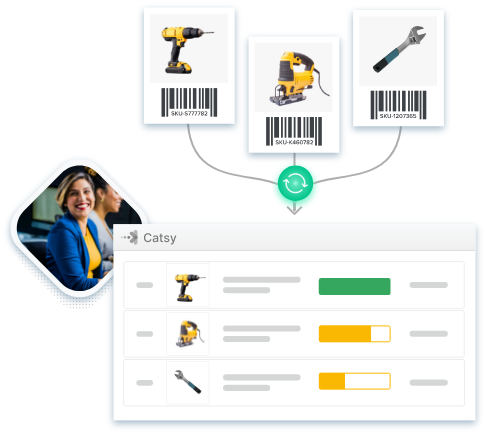
To impress the buyers, your sales team needs to have a custom-branded digital catalog with your products that match their criteria. Using brand portal, the sales team can go into brand portal, select yellow tinted light bulbs in seconds via faceted search, and export into a branded catalog template in InDesign.
In addition, your marketing team can create catalogs based on customer profiles (such as the coffee shop chain) and store the ready-to-go catalogs in the brand portal. Sales teams and retailer partners will be able to browse and download catalogs you have curated explicitly for them.
Moreover, you can have a variety of catalogs and price books with different levels of pricing. Based on the price structure of your products, you can give certain retailers access to the catalogs that match their current price points. This helps you deliver personalized products pricing. This is especially useful for B2B organizations.
2. Share via Lightboxes.
Using the Catsy Brand Portal, you can share your entire collection as a lightbox. By adding specific assets to a lightbox before sharing with partners or other users, you can ensure you’re sharing a customized selection of assets in their most up-to-date version. This enhances the sharing experience greatly, saving time and stress for both the marketing team and users who request assets.
3. Hide or reveal products.
The Brand portal features customized security, meaning you can decide how much you want to share with specific users of your brand portal. For example, if you have a new product coming out and would like to start sharing assets with your sales team, you can. In the same breath, you can keep the products hidden from outside partners who shouldn’t be in on the secret just yet.
As explained with the catalogs, you can hide sensitive information such as pricing for certain partners while allowing the sales team full access to product information linked with assets.

Digital Asset Management (DAM) improves collaboration within teams.
You can create different user roles within DAM and assign additional privileges based on the user’s tasks. Your marketing team can decide what each user can view, edit and export within digital asset management. Not only does this enable teams to collaborate effectively, but also propels product launches.
Here’s how team collaboration works within DAM, team by team:
Sales Team
The sales team is always on the move. From emergency meetings to impromptu sales pitches, you want to ensure they are empowered with the assets they need 24/7. The brand portal makes sure they find the asset they need quickly without engaging the marketing team.
Marketing Team
Sometimes, the marketing team may be working on a project that involves third parties. Collaborating under these circumstances can be tricky if everyone on board does not have access to the same assets. However, you can create a brand portal where everyone has access to all the assets they need without losing sight of the entire project.
Outside partners
You will always have partners such as retailers who need access to digital assets consistent with the brand. Without a brand portal, they will have difficulty keeping up with the regular updates you make to various assets. A brand portal with approved assets can easily find what they need without worrying about using the wrong assets.
Shareholders
Save shareholders the time they would spend learning about new products. You can create a brand portal with secure access where they can browse through all the information they need.
Beyond these, there are other overall benefits of using brand portals. Here, I will go over some of the essential benefits.
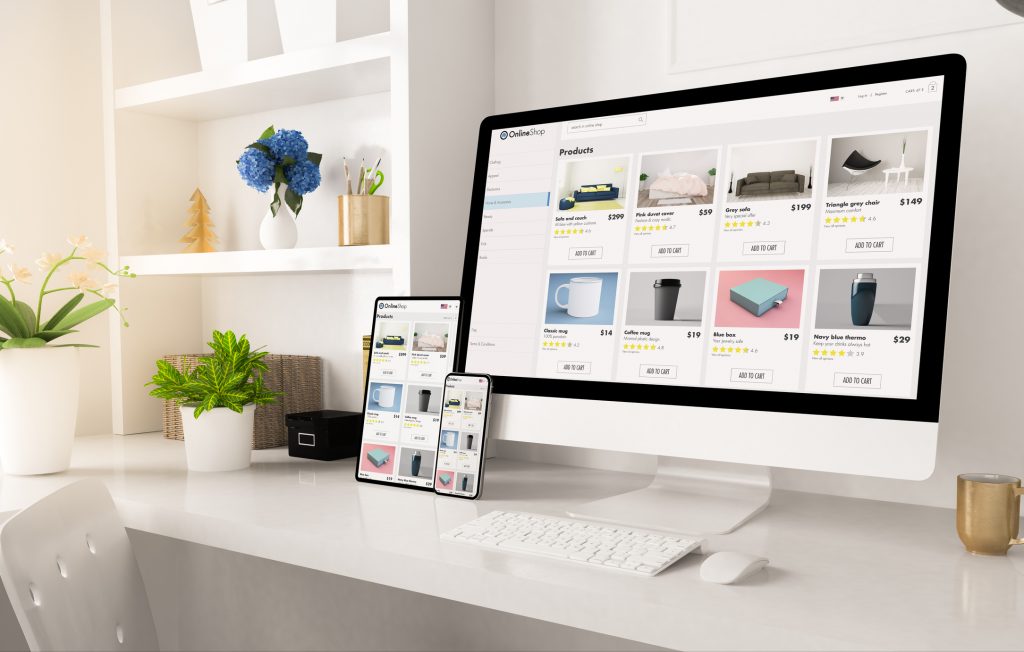
DAM ensures accuracy and accessibility, for increased revenue opportunities.
Let’s imagine that your sales team is about to close a deal. They need to present evidence of past projects such as photos, spec sheets, etc. They have to search through several images before getting the perfect one. Apart from taking so much time, it may cause the deal to break down in a situation where they couldn’t find the images they wanted.
You can avoid this problem with a brand portal by ensuring that your sales team always has the right assets. This will make them more efficient.
Promote brand consistency and integrity.
Your marketing and sales team are spread across different channels which you want to make sure they comply with your brand compliance guidelines. A brand portal allows you to control digital assets, logos, templates, etc., for your entire organization. At the same time, you can publish brand guidelines for all authorized users and update them whenever necessary. Your brand integrity is, therefore, protected across the board.
Retailers can easily promote your brand with the right assets.
You don’t want your retailers having to take images of products themselves. Apart from it mostly being of lower quality, it does not mean well for your brand integrity. Catsy portals ensure that you can create a safe space for your retailers to easily access the latest version of product images. It is more reliable and helps maintain brand consistency.
Streamline access to external partners.
You want your external partners to have access to your digital assets while also controlling what they can see or not. The brand portal is your go-to solution. You can grant access to only assets relevant to them. This way, they do not even have to reach out to you anytime they need a file or an image.
Digital Asset Management ensures access security.
Your digital assets are crucial to your business. This is why access to these assets must be protected from unauthorized access. Catsy ensures that your assets are secured, and only those authorized can secure access to it.
Conclusion
Catsy digital asset management software is designed to help organizations become more efficient by providing a system that simplifies creative content creation processes, marketing, and sales efforts and enhances collaboration between internal and external teams.
DAM’s industry-leading tools allow you to create completed products quickly, enrich assets for SEO, organize assets for easy find-ability and accessible file sharing from anywhere, anytime. In addition, Casty helps you manage your brand effectively through features that enable page customization, catalog creation, and brand consistency.
Catsy PIM and DAM is your “easy” button for digital asset management. Speed products to market, eliminate lost assets, guarantee file security and control user access. To learn more about what Catsy DAM software and PIM software can do for you, schedule a live demo or visit the website at catsy.com.
Product information management (PIM) is a catalog software tool built to speed products to market.
Digital asset management (DAM) is a software used to organize and enrich digital assets.

